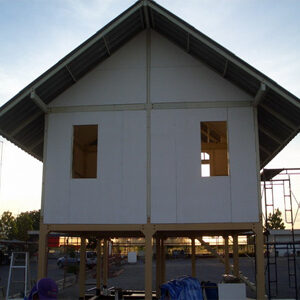 MGO boards have gained popularity in the construction industry due to a wide range of advantages that make them a superior alternative to traditional materials like drywall, plywood, and cement board.
MGO boards have gained popularity in the construction industry due to a wide range of advantages that make them a superior alternative to traditional materials like drywall, plywood, and cement board.
Here are the main advantages of MGO boards:
- Exceptional Fire Resistance
This is one of the most significant advantages of MGO boards. They are inherently non-combustible and have a high fire rating, often achieving an A1 Euroclass rating or a Class A rating in the U.S. This means:
- They do not burn or contribute to the spread of fire. When exposed to fire, MGO boards will char but not ignite, helping to contain the fire and provide more time for occupants to evacuate.
- They do not release toxic fumes or smoke. Unlike some other materials that can release harmful gases when burned, MGO boards are non-toxic, making them a safer choice in the event of a fire.
- They maintain structural integrity. Even under extreme heat, MGO boards remain dimensionally stable and do not crumble, which helps to maintain the integrity of fire-rated walls and assemblies.
- High Moisture and Mold Resistance
MGO boards are naturally resistant to water and moisture, which is a major benefit, especially in humid climates or for applications in wet areas.
- They do not swell, warp, or rot when exposed to water, unlike wood-based products.
- They are a poor food source for mold and mildew. MGO’s inorganic composition prevents the growth of mold and fungus, contributing to healthier indoor air quality.
- They maintain strength in humid conditions. This makes them ideal for use in bathrooms, kitchens, basements, and exterior sheathing where moisture is a concern.
- Durability and Strength
MGO boards are very durable and offer a high strength-to-weight ratio.
- Impact resistance: They are much stronger and more resistant to impact than standard gypsum drywall, making them ideal for high-traffic areas in commercial and residential buildings.
- Resistance to pests: Their inorganic composition means they are impervious to termites, carpenter ants, and other wood-boring insects.
- Dimensional stability: MGO boards have a low coefficient of thermal expansion, so they do not expand or contract significantly with changes in temperature or humidity. This prevents cracking and shifting, ensuring a long-lasting finish.
- Eco-Friendliness and Safety
MGO boards are considered a green building material due to their sustainable and non-toxic properties.
- Non-toxic composition: They do not contain harmful substances like formaldehyde, asbestos, or crystalline silica.
- Low-energy production: The manufacturing process for MGO boards is less energy-intensive than that of other materials like cement board.
- Recyclable: MGO boards are recyclable and can even be crushed and used as a soil amendment.
- Ease of Use and Versatility
MGO boards are surprisingly easy to work with despite their strength.
- Simple installation: They can be scored and snapped like drywall or cut with a standard circular saw using a carbide-tipped blade. This can save on labor costs and project time.
- Lightweight: MGO boards are lighter than cement board, making them easier to handle and transport on a job site.
- Versatile applications: They can be used for a wide range of projects, including interior and exterior walls, ceilings, subflooring, tile backer board, and in fire-rated assemblies
SEP
2025
